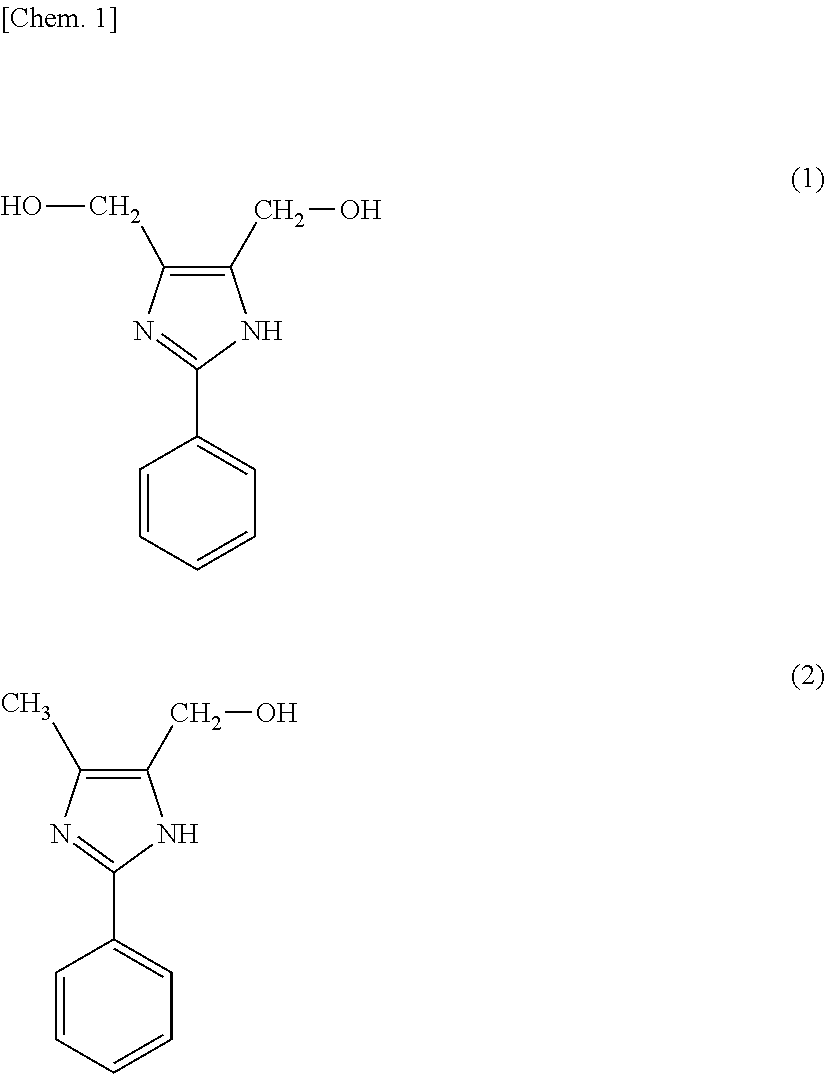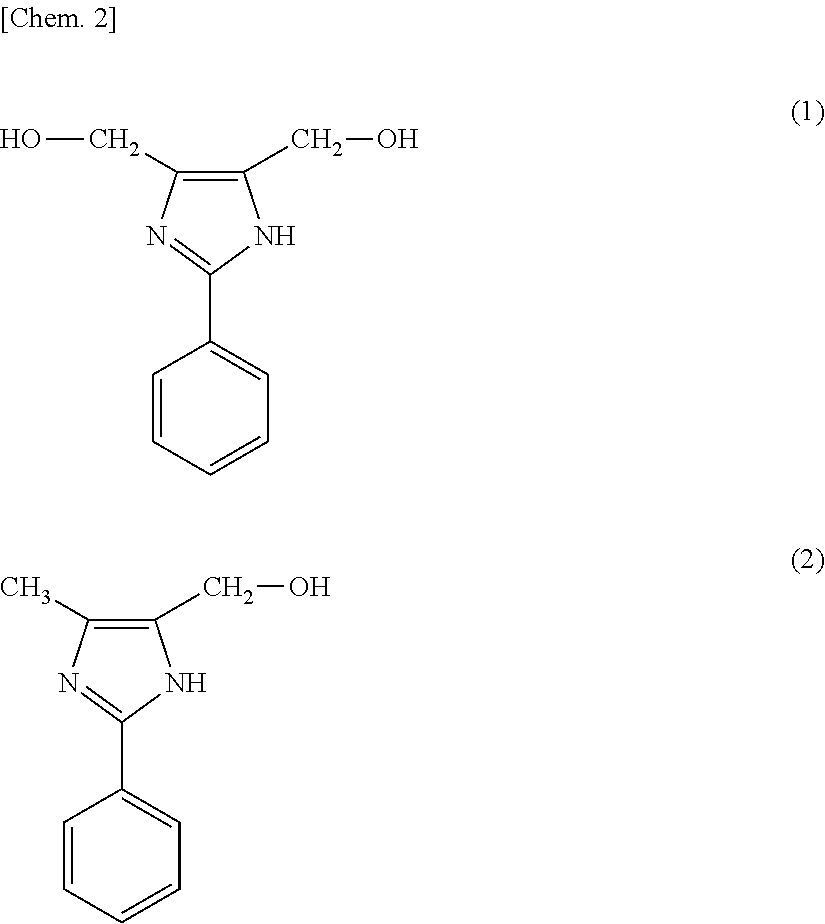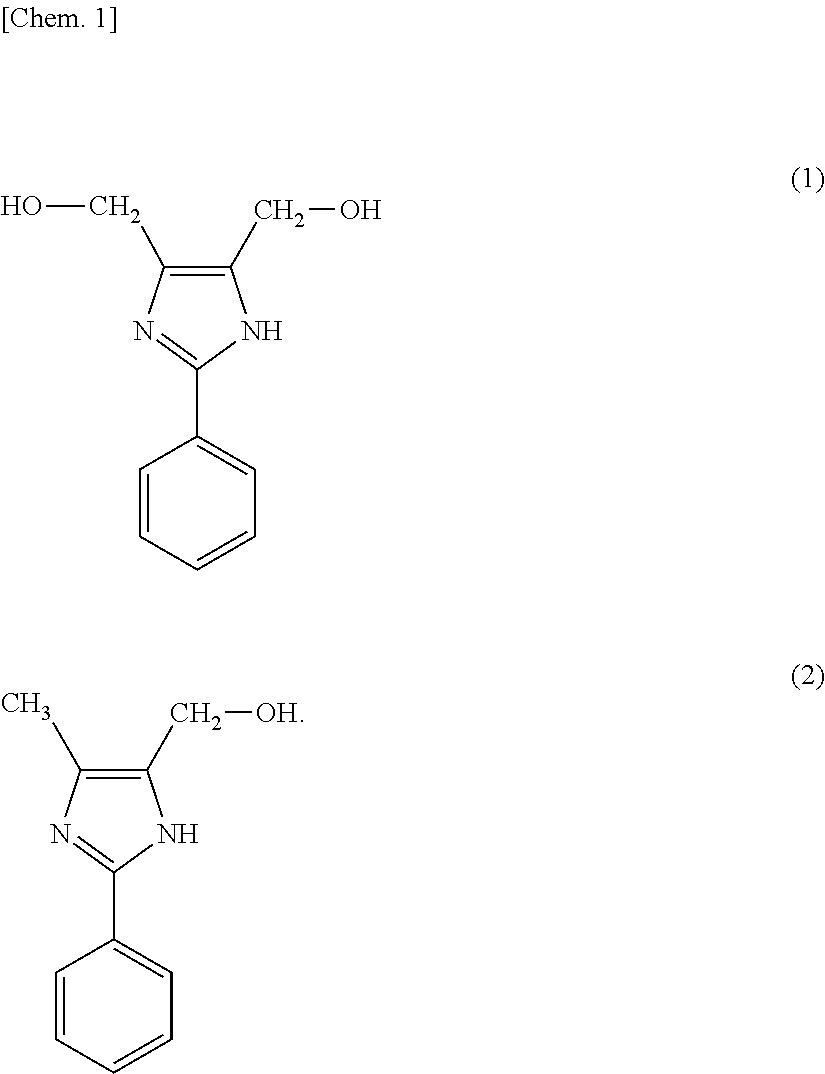Epoxy resin composition, prepreg for fiber-reinforced composite material, and fiber-reinforced composite material
a technology of epoxy resin and composite material, which is applied in the field of epoxy resin composition, fiber-reinforced composite material prepreg, can solve the problems of increased production cost of fiber-reinforced composite material and prolonged molding time, and achieve excellent heat resistance and mechanical characteristics, long pot life, and excellent viscosity stability
- Summary
- Abstract
- Description
- Claims
- Application Information
AI Technical Summary
Benefits of technology
Problems solved by technology
Method used
Image
Examples
example 1
[0161]Component (A) and F-1 were measured at the composition of Table 1 in a glass flask and were melted and mixed at 140° C. Thus, a master batch was prepared.
[0162]The master batch thus obtained and Component (B) were stirred and mixed at the composition of Table 1 at 100° C. This was slowly cooled to 60° C., and Component (C), Component (D), Component (E), and the remaining Component (F) were added thereto in the amounts indicated in Table 1. The mixture was stirred and mixed until the mixture became uniform, and then the mixture was subjected to degassing in a vacuum. Thus, an epoxy resin composition was obtained.
[0163]Various measurements and evaluations were carried out using the epoxy resin composition thus obtained. The results are presented in Table 1.
examples 2 to 10
[0164]Epoxy resin compositions were prepared in the same manner as in Example 1, except that the respective amounts of the components were changed to the amounts indicated in Table 1, and the measurements and evaluations were respectively carried out. The results are presented in Table 1.
PUM
| Property | Measurement | Unit |
|---|---|---|
| glass transition point | aaaaa | aaaaa |
| glass transition point | aaaaa | aaaaa |
| glass transition point | aaaaa | aaaaa |
Abstract
Description
Claims
Application Information
 Login to View More
Login to View More - R&D
- Intellectual Property
- Life Sciences
- Materials
- Tech Scout
- Unparalleled Data Quality
- Higher Quality Content
- 60% Fewer Hallucinations
Browse by: Latest US Patents, China's latest patents, Technical Efficacy Thesaurus, Application Domain, Technology Topic, Popular Technical Reports.
© 2025 PatSnap. All rights reserved.Legal|Privacy policy|Modern Slavery Act Transparency Statement|Sitemap|About US| Contact US: help@patsnap.com



